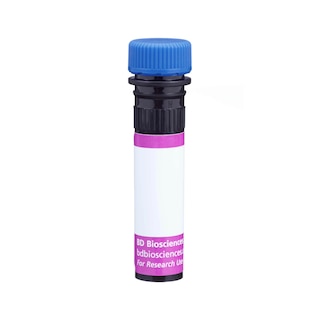-
Reagents
- Flow Cytometry Reagents
-
Western Blotting and Molecular Reagents
- Immunoassay Reagents
-
Single-Cell Multiomics Reagents
- BD® OMICS-Guard Sample Preservation Buffer
- BD® AbSeq Assay
- BD® OMICS-One Immune Profiler Protein Panel
- BD® Single-Cell Multiplexing Kit
- BD Rhapsody™ ATAC-Seq Assays
- BD Rhapsody™ Whole Transcriptome Analysis (WTA) Amplification Kit
- BD Rhapsody™ TCR/BCR Next Multiomic Assays
- BD Rhapsody™ Targeted mRNA Kits
- BD Rhapsody™ Accessory Kits
-
Functional Assays
-
Microscopy and Imaging Reagents
-
Cell Preparation and Separation Reagents
-
- BD® OMICS-Guard Sample Preservation Buffer
- BD® AbSeq Assay
- BD® OMICS-One Immune Profiler Protein Panel
- BD® Single-Cell Multiplexing Kit
- BD Rhapsody™ ATAC-Seq Assays
- BD Rhapsody™ Whole Transcriptome Analysis (WTA) Amplification Kit
- BD Rhapsody™ TCR/BCR Next Multiomic Assays
- BD Rhapsody™ Targeted mRNA Kits
- BD Rhapsody™ Accessory Kits
- United States (English)
-
Change country/language
Old Browser
This page has been recently translated and is available in French now.
Looks like you're visiting us from {countryName}.
Would you like to stay on the current country site or be switched to your country?




Flow cytometric analysis of CD304 expression on mouse splenic lymphocytes. Balb/c mouse splenocytes were stained with Alexa Fluor® 647 Rat Anti-Mouse CD4 (Cat. No. 557681), and BD Horizon™ BV421 Rat IgG2a, κ Isotype Control (Cat. No. 562602) or BD Horizon™ BV421 Rat Anti-Mouse CD304 antibody (Cat. No. 567112 or 567113) at 0.125 μg/test. 7-AAD (7-Amino-Actinomycin D) Solution (Cat. No. 559925) was added to the cells right before analysis. Two-parameter flow cytometric pseudocolor plots showing correlated expression of CD304 (right panel) or Ig Isotype control (left panel) versus CD4 staining was derived from gated events with the forward and side light-scatter characteristics of viable (7-AAD-negative) lymphocytes. Flow cytometry and data analysis were performed using a BD FACSCelesta™ Cell Analyzer System and FlowJo™ software. Data shown on this Technical Data Sheet are not lot specific.


BD Horizon™ BV421 Rat Anti-Mouse CD304

Regulatory Status Legend
Any use of products other than the permitted use without the express written authorization of Becton, Dickinson and Company is strictly prohibited.
Preparation And Storage
Recommended Assay Procedures
BD™ CompBeads can be used as surrogates to assess fluorescence spillover (Compensation). When fluorochrome conjugated antibodies are bound to CompBeads, they have spectral properties very similar to cells. However, for some fluorochromes there can be small differences in spectral emissions compared to cells, resulting in spillover values that differ when compared to biological controls. It is strongly recommended that when using a reagent for the first time, users compare the spillover on cells and CompBead to ensure that BD Comp beads are appropriate for your specific cellular application.
For optimal and reproducible results, BD Horizon Brilliant Stain Buffer should be used anytime two or more BD Horizon Brilliant dyes are used in the same experiment. Fluorescent dye interactions may cause staining artifacts which may affect data interpretation. The BD Horizon Brilliant Stain Buffer was designed to minimize these interactions. More information can be found in the Technical Data Sheet of the BD Horizon Brilliant Stain Buffer (Cat. No. 563794/566349) or the BD Horizon Brilliant Stain Buffer Plus (Cat. No. 566385).
Product Notices
- Since applications vary, each investigator should titrate the reagent to obtain optimal results.
- An isotype control should be used at the same concentration as the antibody of interest.
- Source of all serum proteins is from USDA inspected abattoirs located in the United States.
- Caution: Sodium azide yields highly toxic hydrazoic acid under acidic conditions. Dilute azide compounds in running water before discarding to avoid accumulation of potentially explosive deposits in plumbing.
- For fluorochrome spectra and suitable instrument settings, please refer to our Multicolor Flow Cytometry web page at www.bdbiosciences.com/colors.
- Pacific Blue™ is a trademark of Molecular Probes, Inc., Eugene, OR.
- Alexa Fluor® is a registered trademark of Life Technologies Corporation.
- BD Horizon Brilliant Violet 421 is covered by one or more of the following US patents: 8,158,444; 8,362,193; 8,575,303; 8,354,239.
- BD Horizon Brilliant Stain Buffer is covered by one or more of the following US patents: 8,110,673; 8,158,444; 8,575,303; 8,354,239.
- Please refer to http://regdocs.bd.com to access safety data sheets (SDS).
- Please refer to www.bdbiosciences.com/us/s/resources for technical protocols.
Companion Products





The V46-1954 monoclonal antibody specifically recognizes mouse CD304, also known as neuropilin 1 (Nrp1). It does not cross-react with neuropilin 2 (Nrp2). CD304 is a type-1 transmembrane protein that plays important roles in neuronal development, angiogenesis, and immunosuppression. Through interactions with plexins and VEGF receptors on neurons and endothelial cells, it is a co-receptor for the class III semaphorin subfamily and vascular endothelial growth factor (VEGF), respectively. The ability of the S1 protein of SARS-CoV-2 virus to bind to Nrp1, a potential mechanism for cellular infection, is being investigated. In the immune system, CD304 is expressed on natural (thymus-derived) Treg cells and may be responsible for the unsuccessful immune regulation of tumor growth.
The antibody was conjugated to BD Horizon BV421 which is part of the BD Horizon Brilliant™ Violet family of dyes. With an Ex Max of 407-nm and Em Max at 421-nm, BD Horizon BV421 can be excited by the violet laser and detected in the standard Pacific Blue™ filter set (eg, 450/50-nm filter). BD Horizon BV421 conjugates are very bright, often exhibiting a 10 fold improvement in brightness compared to Pacific Blue conjugates. Due to nearly identical excitation and emission properties but different spillover characteristics, BD Horizon BV421, Pacific Blue, and BD Horizon V450 cannot be used simultaneously.

Development References (9)
-
Delgoffe GM, Woo SR, Turnis ME, et al. Stability and function of regulatory T cells is maintained by a neuropilin-1-semaphorin-4a axis.. Nature. 2013; 501(7466):252-6. (Biology). View Reference
-
Goel HL, Mercurio AM. VEGF targets the tumour cell.. Nat Rev Cancer. 2013; 13(12):871-82. (Biology). View Reference
-
Guo HF, Vander Kooi CW. Neuropilin Functions as an Essential Cell Surface Receptor.. J Biol Chem. 2015; 290(49):29120-6. (Biology). View Reference
-
Hansen W, Hutzler M, Abel S, et al. Neuropilin 1 deficiency on CD4+Foxp3+ regulatory T cells impairs mouse melanoma growth.. J Exp Med. 2012; 209(11):2001-16. (Biology). View Reference
-
Hwang JY, Sun Y, Carroll CR, Usherwood EJ. Neuropilin-1 Regulates the Secondary CD8 T Cell Response to Virus Infection. mSphere. 2019; 4(3):e00221-19. (Biology). View Reference
-
James L. Daly, Boris Simonetti, Carlos Antón-Págaro, et al. Neuropilin-1 is a host factor for SARS-CoV-2 infection. 2020. Available: https://doi.org/10.1101/2020.06.05.134114 2020, June 6.
-
Liu WQ, Lepelletier Y, Montès M, et al. NRPa-308, a new neuropilin-1 antagonist, exerts in vitro anti-angiogenic and anti-proliferative effects and in vivo anti-cancer effects in a mouse xenograft model.. Cancer Lett. 2018; 414:88-98. (Biology). View Reference
-
Roy S, Bag AK, Singh RK, Talmadge JE, Batra SK, Datta K. Multifaceted Role of Neuropilins in the Immune System: Potential Targets for Immunotherapy.. Front Immunol. 2017; 8:1228. (Biology). View Reference
-
Yadav M, Louvet C, Davini D, et al. Neuropilin-1 distinguishes natural and inducible regulatory T cells among regulatory T cell subsets in vivo.. J Exp Med. 2012; 209(10):1713-22, S1-19. (Biology). View Reference
Please refer to Support Documents for Quality Certificates
Global - Refer to manufacturer's instructions for use and related User Manuals and Technical data sheets before using this products as described
Comparisons, where applicable, are made against older BD Technology, manual methods or are general performance claims. Comparisons are not made against non-BD technologies, unless otherwise noted.
For Research Use Only. Not for use in diagnostic or therapeutic procedures.